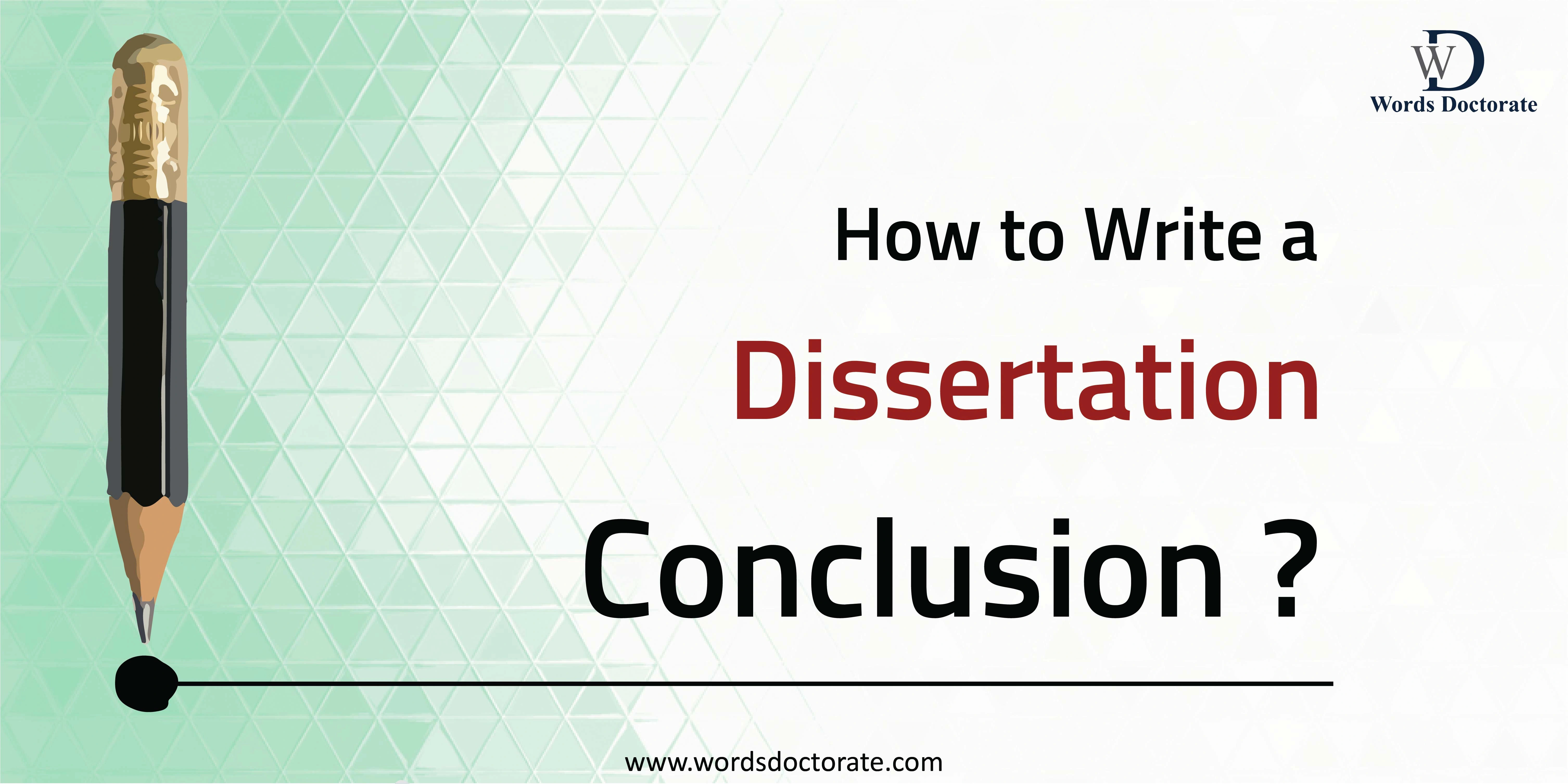How to Write a Dissertation Conclusion

Write a Dissertation Conclusion in Few Steps
Table of contents
After writing a dissertation of more than 10000 words, it is a real challenge to conclude every important aspect of the research in a nutshell. You might get real nightmares while answering the points for - How to write a Dissertation Conclusion?
This article will offer you the right guidelines to write a Dissertation Conclusion. Go through the core points and pitfalls as noted in this article. Follow the examples for a concise, yet concrete dissertation Conclusion.
How to Write a Dissertation Conclusion: Key Points.
The Conclusion of your dissertation must make clear declarations about your selection of your Thesis Topic, and your contributions in the respective field of research. In most cases, the readers skip to the Dissertation Conclusion to get a gist of your research work. It is thus important that you leave a strong positive impression on your readers while concluding the Help dissertation Dissertation. The key points to be noted while constructing the Dissertation Conclusion are:
- Begin by stating the Research Purpose as mentioned in your First Chapter: Introduction.
- Reply to the identified Research Questions that you have placed in your First Chapter: Introduction.
- Give a clear solution to the Problem Statement as placed in your First Chapter: Introduction.
- Meet the Research Gaps as identified in your Second Chapter: Literature Review.
- Justify the selection of your Third Chapter: Research Methodology, in 2 sentences.
- Discuss your justification for your Fourth Chapter: Research Findings.
- Very precisely add the core points as noted in Chapter Five: Discussion.
- Meet Research Aim & Objectives Based on the Research Findings.
Make sure there are no elaborated discussions or repetitions in this Last Chapter for the Dissertation Conclusion. While concentrating on - How to write a Dissertation Conclusion- remain well connected to your Thesis Topic and Research Purpose.
Write a Dissertation Conclusion with Purpose.
Dissertation Conclusion should always start by stating the purpose of the research. It is in this context that all the other steps for developing the Dissertation Conclusion get interconnected:
The Research Purpose must be justified from every dimension. In the Dissertation Conclusion, you must remain focused on concluding your research by proving that your Research Purpose deserves serious attention. The reader must get inspired by your Dissertation Conclusion. The inspiration should be such that future research gets more directed toward meeting your Research Purpose from different perspectives.
You must give a systematically arranged summary of your research process. At the same time, express how significantly you have made a valuable contribution to meeting the Research Purpose. The Dissertation Conclusion should be unique and should be the result of an in-depth writing research process. Enlist all the new knowledge that you have attained through your research and the ways through which the new knowledge adds to the process of resolving the concern. While doing so take care of the length of this chapter.
Length of Dissertation Conclusion.
The Conclusion of a Dissertation can be 5% to 10% of the total word count. In general, it should be a summing up, done in a couple of pages. Any kind of practical or empirical research strives to offer a shorter Conclusion than any theoretical or systematically developed review. The inclusion of Recommendations and Future Research in the Dissertation Conclusion is important. The Recommendations must be such that they hold future perspectives of the research process. This can take half of a page.
Always follow the University guidelines to write a Dissertation Conclusion. Sometimes there is the variation of including the Conclusion along with the Discussion Chapter. In such cases, the Dissertation Conclusion occupies only 5% of the total word count.
Examples of Write a Dissertation Conclusion.
While trying to get an insight into - How to write a Dissertation Conclusion – start focussing on the Aim of your research and keep on asking – Why you are engaged in this research?
The examples noted below will clarify your perceptions regarding the right way to write a Dissertation Conclusion.
At the beginning, your Dissertation Conclusion can be:-
As stated above, start your conclusion with a direct reference to your research purpose and relate it to resolving the research problem. As an example, let us consider a topic on Evaluative Strategies for Developing Agribusiness in the Urban Areas of Ontario.
Write a Dissertation Conclusion without Drawbacks:-
Always remember that to write a Dissertation Conclusion, you must be very particular in avoiding any kind of drawback. Consider keeping away from the main drawbacks enlisted below:
- Extensive Elaborations: The Dissertation Conclusion must be crisp and precise. Avoid any kind of unnecessary elaborations. All sorts of debates should be met in the Chapter for Discussion.
- Avoid Repetitions: Make sure that you construct the Dissertation Conclusion in a very systematic manner. Use an appropriate way to meet the Aims and Objectives of the research. Start from the First Chapter and follow each chapter one after another. You are not supposed to repeat the context all the time.
- Language Clarity: Use short sentences and offer logical connections between one sentence and the other. The points of argument should be placed as per the structure of the research. Avoid using ambiguous sentences and remain clear about your declarations.
Thus, write a Dissertation Conclusion with clarity and systematically justify your derivations. A summary of the entire research process and mentioning the key derivations are the basic needs of the Dissertation Conclusion. Never compromise with that.
Simplifying Academic Writing: Expert Tips for Crafting a Perfect Dissertation Abstract!


